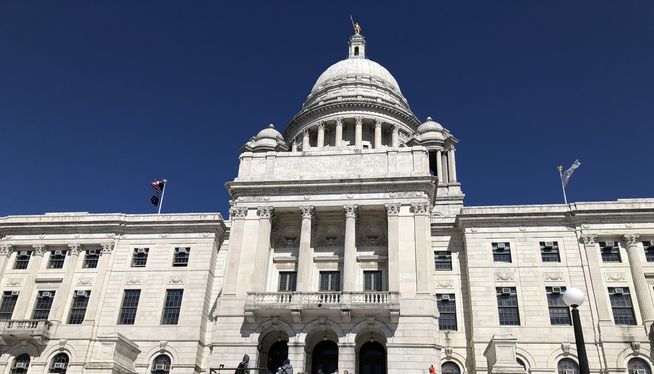
By Kimberly Rau
If there’s one thing that history has taught us, it’s that human nature rarely changes. Society may swing like a pendulum, but the people within it are, at their core, still people. However, if there’s one thing that English class taught us, it’s that while Charles Dickens’ words may still hold relevance to modern readers, his dense prose can be tough to traverse. Add in a bunch of characters (including a group whose code names are all Jacques), class rivalry, two countries and a rebellion against the aristocracy, and you’ve got a lot to get your head around with “A Tale of Two Cities.”
Salvation comes via Brian McEleney’s adaptation of the classic novel, which cuts through the minutia to tell Dickens’ stirring story in just over two hours. Told in a series of chapter-by-chapter vignettes, the play moves quickly, and, with platforms scattered throughout the audience that the actors use frequently, the audience is quite literally put in the middle of the action. Together, these things work marvelously to get both the emotion and the point of the show across. And though the show is largely set in the 1700s, in today’s economic climate, it’s easy to relate to the frustration of the rich getting richer while the working class does twice as much to get next to nothing in return. Audrey Rowland’s program synopsis states it best: “A Tale of Two Cities is a big story set in a sweeping world, where people try their best in a political and economic system that does not make it easy to be a good person.”
The stage is set to look like a university library, but as soon as the storytelling starts, tables and chairs become whatever the actors are telling you they are. By the end of the show, the sound of a paper cutter is enough to give you chills. It’s impossible not to suspend your disbelief, and that’s thanks to director Tyler Dobrowsky and the large cast that works together to keep the illusion going. The entire thing would fall apart if even one actor was not giving it their all. Fortunately for all of us, every person up there is immersed completely in their character.
Stephen Berenson and Rachael Warren play Monsieur and Madame Defarge, respectively, who are involved with secret anti-aristocracy activities throughout the show. Mme. Defarge is the more volatile of the two, knitting a hit list into a red scarf and ruthlessly going after those who are perceived to be against the working class. It’s clear M. Defarge is a man of principle, but is powerless against his wife’s rage, and Berenson and Warren play off each other well. Both give outstanding performances, as does Rebecca Gibel as the kindhearted Lucie Manette. Lucie has married Charles Darnay, a secret aristocrat who has abandoned his title…which almost saves him. Taavon Gamble’s performance as Charles is nothing short of excellent. Brian McEleney takes the stage as the traumatized, hero of the working class Doctor Manette, and is strong and subtle in his portrayal. Daniel Duque-Estrada as the down-on-his-luck Sydney Carton also gives a noteworthy performance. He is adept at molding his character’s almost unbelievable actions into something understandable, which is no small feat. These examples are just a drop in the bucket; every actor in the program deserves credit for this master class in character work and acting.
If you’re a fan of Dickens’ writing, then this is a treatment of his work that you won’t want to miss. If you’ve been a little hesitant to check it out, worry not. This is a story that transcends its era and is beautifully presented in this adaptation on Trinity’s stage.
A Tale of Two Cities runs through March 22 at Trinity Repertory, 201 Washington St., Providence. Tickets may be obtained at the box office, online at trinityrep.com or by calling 401-351-4242.













